- Best Seller
- Tea Type
- Tea Ware
- Tea Pet & Garniture
- Mood & Health
- Gift Set
- Shop AllHot

 Select options This product has multiple variants. The options may be chosen on the product page
Select options This product has multiple variants. The options may be chosen on the product page
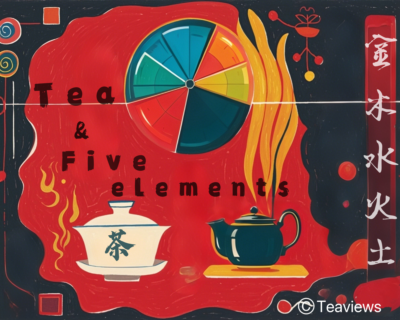
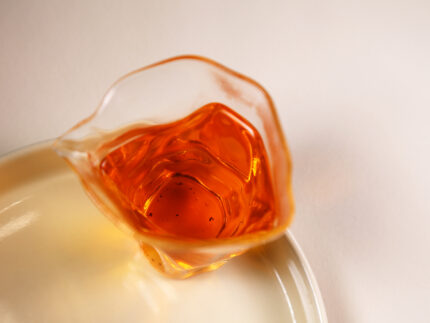
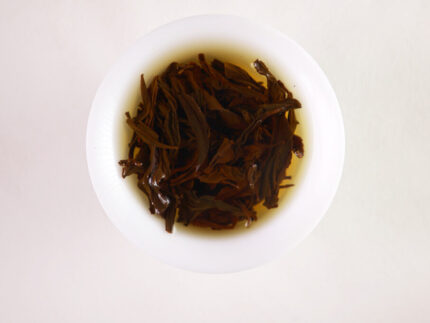
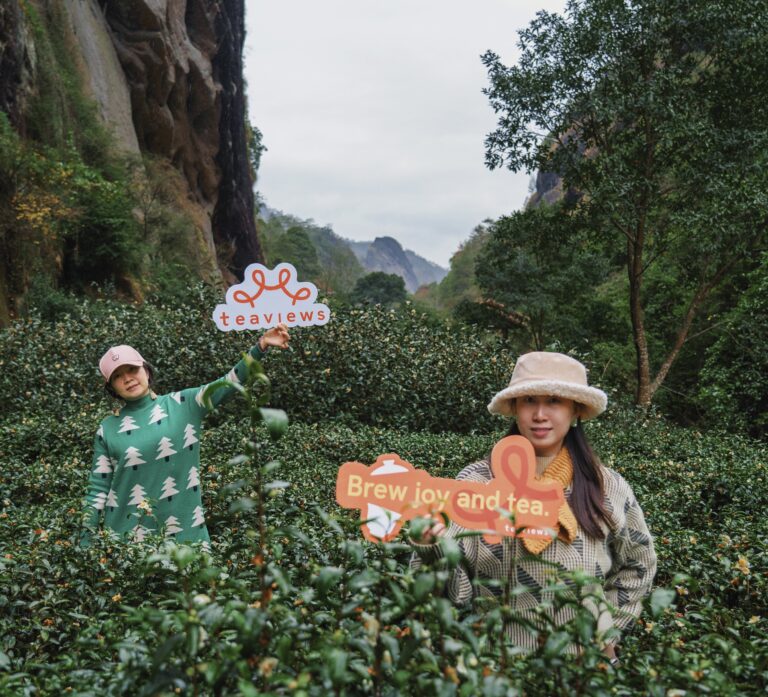
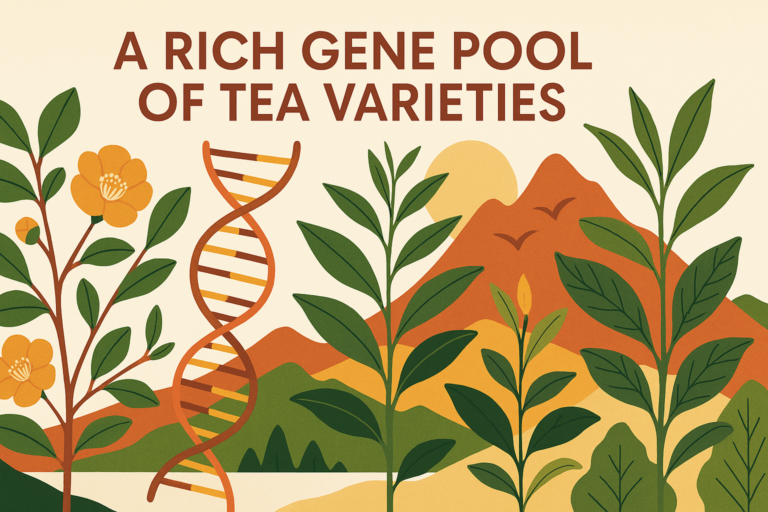




Something exciting is brewing!
Stay tuned for upcoming deals, and subscribe to be the first to know about exclusive offers on tea and teaware.

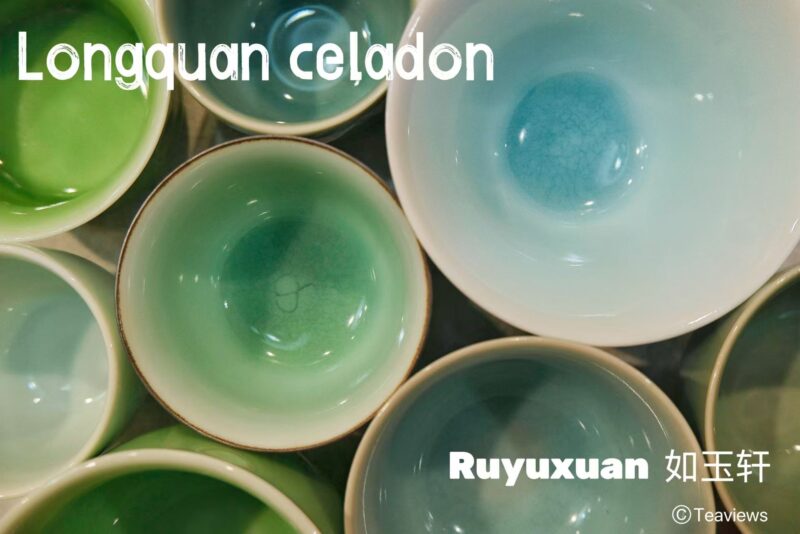
by Charlotte Yao
The relationship between Longquan celadon and the tea ceremony culture has a long and storied history. The two are deeply integrated at the levels of history, aesthetics, and philosophy, forming a unique symbol of Eastern culture.
When the culture of tea first flourished in the Tang Dynasty, *Lu Yu’s The Classic of Tea* mentioned that the tea utensils made of Longquan celadon were “as clear as ice and as lustrous as jade,” praising how their color complemented the tea soup perfectly.
The Song Dynasty witnessed the peak of the tea ceremony, including the practices of diancha (tea whisking) and doucha (tea competition). As a result, Longquan celadon, characterized by its pure glaze color and fine texture of the body, became the top choice for tea utensils. Emperor Huizong of the Song Dynasty advocated an aesthetic standard of “purity in cyan and white tones.” The light blue and plum green glaze colors of the Longquan Kiln perfectly matched the artistic conception of “elegance and simplicity” pursued by the literati of the Song Dynasty.
From the Yuan Dynasty through the Ming and Qing Dynasties, Longquan celadon was exported overseas via the Maritime Silk Road and became an important representative of “Tang goods” in the tea ceremonies of Japan and Goryeo.
Ms. Pan Junli, the owner of the Yuruxuan brand, is a professional agent broker of Longquan celadon. Just like the Longquan celadon she adores, she exudes a gentle and upright demeanor. Pan Junli was born into a Longquan porcelain family and jokingly says that she grew up playing with clay. Her father was a master mold maker in a state-owned porcelain factory and was a key technical member selected for the task of creating Longquan celadon as a Chinese national gift.
“Back then, the children of the employees played around in the state-owned porcelain factory. My father was a master mold maker, and he was in charge of making plaster molds,” Pan Junli said with a smile. “Later, I followed my mother and moved between different workshops, engaging in tasks like slip casting, trimming the坯体 (body of the porcelain), selecting porcelain pieces, and so on. The things we loved to do the most were shaping the clay strips for the teapot handles, and wrapping eggs and sweet potatoes with clay blanks and throwing them into the firing room to roast. So, we played with clay more than anything else.”
The state-owned porcelain factory was their huge playroom. Children who grew up surrounded by this porcelain-making environment and were influenced by it gradually took over the occupations of their parents as they matured.
“Mr. Shao Jianjun is an old friend who grew up with me. He later became an outstanding Longquan celadon artist. In my family, my two elder sisters and my elder brother also joined the state-owned porcelain factory one after another upon reaching adulthood. Now, they are all distinctive artists,” said Pan Junli. At first, fulfilling her parents’ expectations, Pan Junli chose to continue her studies and work outside her hometown. However, her bond with Longquan celadon kept on evolving.
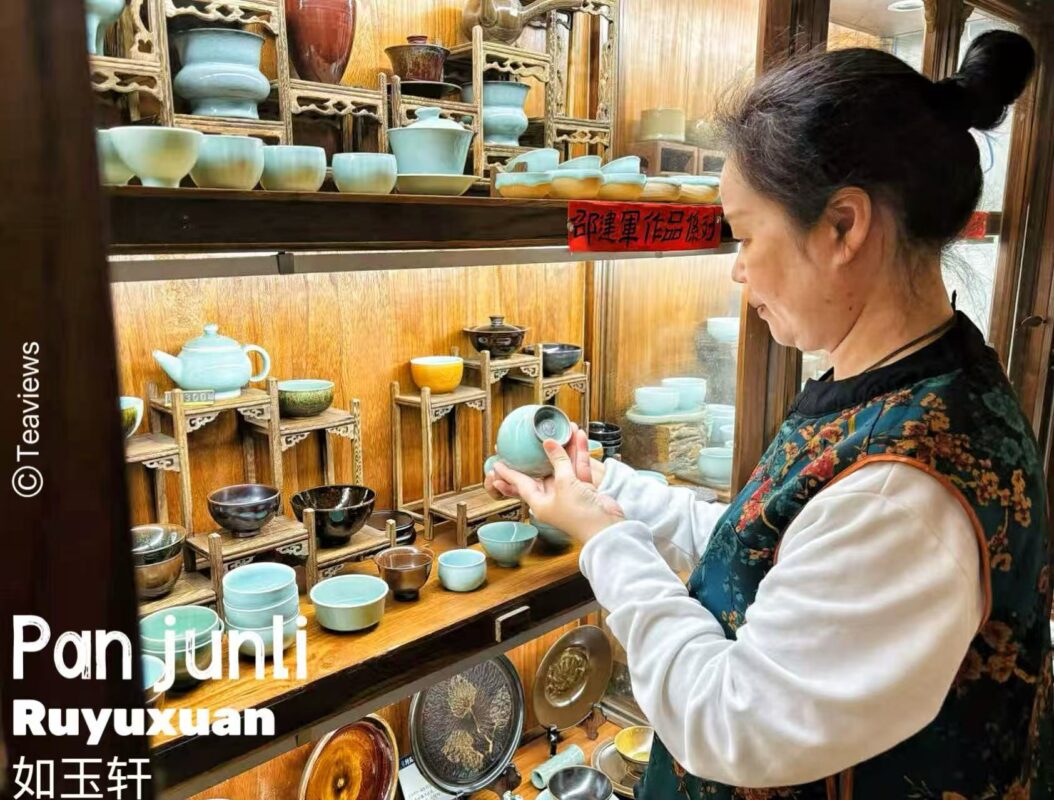

“Mr. Shao Jianjun is an old friend who grew up with me. He later became an outstanding Longquan celadon artist. In my family, my two elder sisters and my elder brother also joined the state-owned porcelain factory one after another upon reaching adulthood. Now, they are all distinctive artists,” said Pan Junli. At first, fulfilling her parents’ expectations, Pan Junli chose to continue her studies and work outside her hometown. However, her bond with Longquan celadon kept on evolving.
On September 30, 2009, at the fourth meeting of the Intergovernmental Committee for the Safeguarding of the Intangible Cultural Heritage of UNESCO, the traditional firing techniques of Longquan celadon in Zhejiang were officially inscribed on the Representative List of the Intangible Cultural Heritage of Humanity. Consequently, Longquan celadon became the very first and the only ceramic item worldwide to be included in the UNESCO “Intangible Cultural Heritage” list.
Pan Junli was overjoyed when she learned of this news. She sensed that the opportune moment had arrived. With her professional acumen and family heritage in the porcelain realm, she believed she could propel Longquan celadon to a broader global arena, and she embarked on the preparations for her own brand.
“Every artist has an independent identity. The production of Longquan celadon comprises 72 intricate procedures. Only those craftsmen who master each and every process with precision can become qualified artisans. They are in the habit of conveying their thoughts and feelings through their works. For those who are not familiar with Longquan celadon, I act as the medium, linking them to this art form and promoting its dissemination.”
In the more than ten years since the establishment of her brand, Pan Junli has successively partnered with over forty Longquan porcelain artists. She has served as an agent for the sale of thousands of artworks. Additionally, she has gone all out in planning art exhibitions, striving to introduce this fascinating human masterpiece to the public.
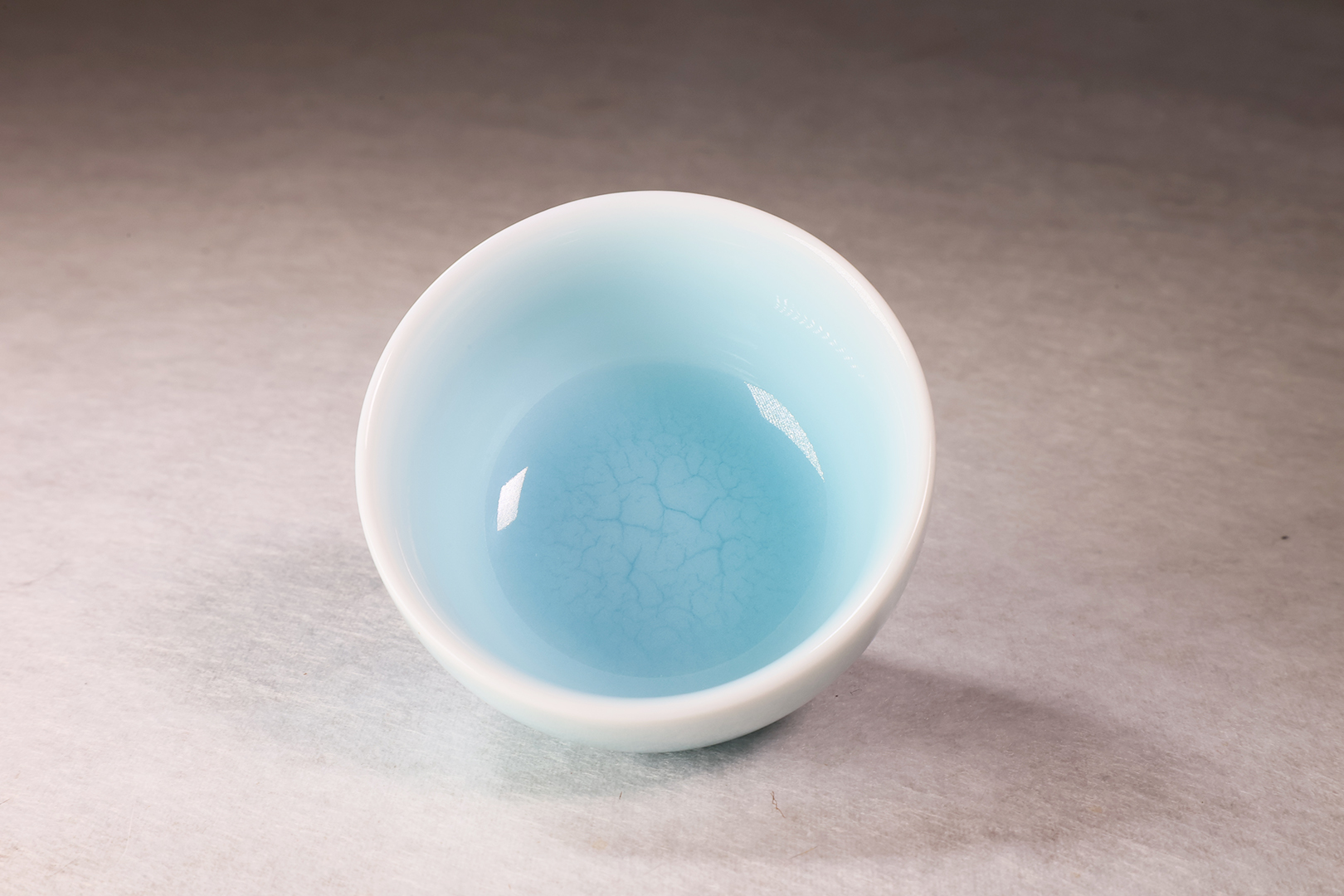
Ruyuxuan Longquan Celadon Teacup
Timeless. Handcrafted. Each cup tells a story of tradition and calm.
Shop Now →On September 30, 2009, at the fourth meeting of the Intergovernmental Committee for the Safeguarding of the Intangible Cultural Heritage of UNESCO, the traditional firing techniques of Longquan celadon in Zhejiang were officially inscribed on the Representative List of the Intangible Cultural Heritage of Humanity. Consequently, Longquan celadon became the very first and the only ceramic item worldwide to be included in the UNESCO “Intangible Cultural Heritage” list.
Pan Junli was overjoyed when she learned of this news. She sensed that the opportune moment had arrived. With her professional acumen and family heritage in the porcelain realm, she believed she could propel Longquan celadon to a broader global arena, and she embarked on the preparations for her own brand.
“Every artist has an independent identity. The production of Longquan celadon comprises 72 intricate procedures. Only those craftsmen who master each and every process with precision can become qualified artisans. They are in the habit of conveying their thoughts and feelings through their works. For those who are not familiar with Longquan celadon, I act as the medium, linking them to this art form and promoting its dissemination.”
In the more than ten years since the establishment of her brand, Pan Junli has successively partnered with over forty Longquan porcelain artists. She has served as an agent for the sale of thousands of artworks. Additionally, she has gone all out in planning art exhibitions, striving to introduce this fascinating human masterpiece to the public.
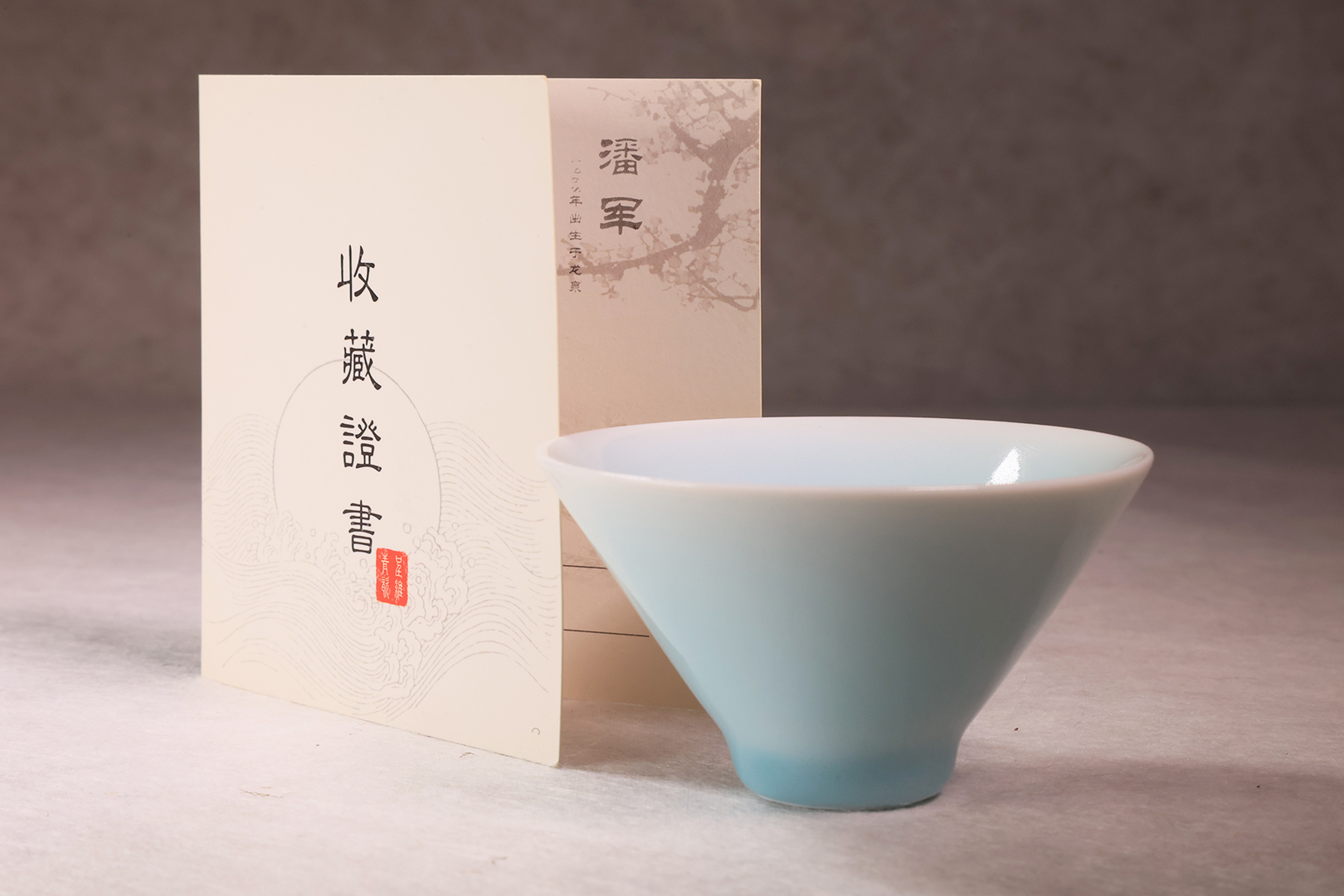
Master-Certified Longquan Celadon Douli Cup
Authentic. Elegant. A quiet statement of tea culture.
Shop Now →“My hometown Lishui city is a land of outstanding people and beautiful scenery. The wonderful mountains and waters here have not only nurtured glossy ganoderma but also, because only the local ore soil is rich in iron elements, provided the rare raw materials for the production of the two treasures, Longquan celadon and Longquan swords,” Pan Junli said as she reminisced about her hometown.
“We’ve all been to museums and ceramic galleries. Wherever there are ancient Chinese ceramics, Longquan celadon is bound to be present. Even in the collections of modern art galleries or the creations of contemporary artists, there are actually references to traditional techniques and aesthetics. As inheritors of this art, we are very fortunate that the foundation of Longquan celadon craftsmanship can be traced, with clear origins and specimens to refer to.” Pan Junli also traces the footsteps of Longquan celadon during her leisure time at work.
With the development of social productive forces, Longquan celadon in China has also evolved. From firewood kilns and coal kilns to modern gas kilns, the oxidation-reduction technology of modern techniques has been greatly improved, and the glaze color is more transparent and beautiful. Comparing the past and the present, with the changes in material structure and tools, we have both craftsmen who pay homage to tradition and study ancient styles and artists who strive for innovation and integrate their own personalities. It can be said that the ‘ancient charm’ of Longquan celadon has been preserved and precipitated over time, but its glaze color has become more modern and advanced.
“We advocate the multi-purpose use of one utensil, and it’s up to modern people to give full play to their creativity and make the right matches. For example, this tea tray in my hand. You can say that it’s the same type as those used by poets hundreds of years ago, and at the same time, it can also be used as a fruit tray, a wall decoration, or a coffee tray. We must not overlook the practicality of Longquan celadon. For instance, the thick glaze can affect the performance of the tea, enhancing its richness and smoothness. We use modern flexibility to carry forward the ancient aesthetic of life, and the fundamental factor for the proper use of these utensils lies with the users.”
“The more significant change is that while Longquan has resumed its annual dragon kiln firing activities, it has also designated Baishanzu, the raw material production area of the clay ore, as a national park. The inheritance of history is crucial, but each firing in the dragon kiln requires 5,000 kilograms of pine wood, which must be controlled in an orderly and measured manner. “Sustainable development and the control of carbon pollution are progress at a more significant level for my hometown,” Pan Junli said.
– Representative works: Flower containers, handmade cups, kettle trays, and leaf tea bowls
– Shao Jianjun is a specially appointed teacher for the celadon major at Longquan Vocational and Technical College. He is a childhood friend of Pan Junli, having grown up surrounded by ceramics. Immersed in the world of ceramics from an early age, he has been deeply engaged in this industry. In 2002, he went to Japan for two years of advanced study. His creative works are full of innovative ideas, combining the aesthetics of the Southern Song Dynasty in ancient China with the Japanese style. He has a unique aesthetic taste in terms of the shape and glaze color of his works.
–All his works are handmade, making each piece unique, and he puts great care into the production of every item. He creates works of different styles every year, especially the new works in recent years using the leaf firing method.
– Representative works: Replicas of official kiln wares from the Southern Song Dynasty, celadon screens
– Jin Yirui is the inheritor of the century-old time-honored brand, the Ge Kiln of the Southern Song Dynasty.His works, such as replicas of official kiln wares from the Southern Song Dynasty, are characterized by golden threads and iron wires, thin bodies with thick glazes, purple mouths, and iron feet. THe has spent a great deal of time and energy collecting old porcelain shards and glaze pieces as a source of inspiration for his creations, bringing the imitation of ancient styles to the extreme. The celadon screens and porcelain plates he invented through innovation have expanded the firing techniques of Longquan celadon to the field of architectural aesthetic products.
– Representative work: amber glaze, opacified glaze, tea-dust glaze works, etc.
– Brother of Pan Junli, from a Longquan celadon family .Pan Jun is dedicated to the research and development of glaze recipes for Longquan porcelain and is a true porcelain enthusiast. He believes in letting his works speak for themselves. Since he owns his own ore sources, he has his own standards for every step, from ore selection and refining to turning it into ore mud. Pan Jun has a notebook in which he records the glaze recipes he has experimented with over the years, which also reflects the refinement of his skills and his high demands on himself over decades.
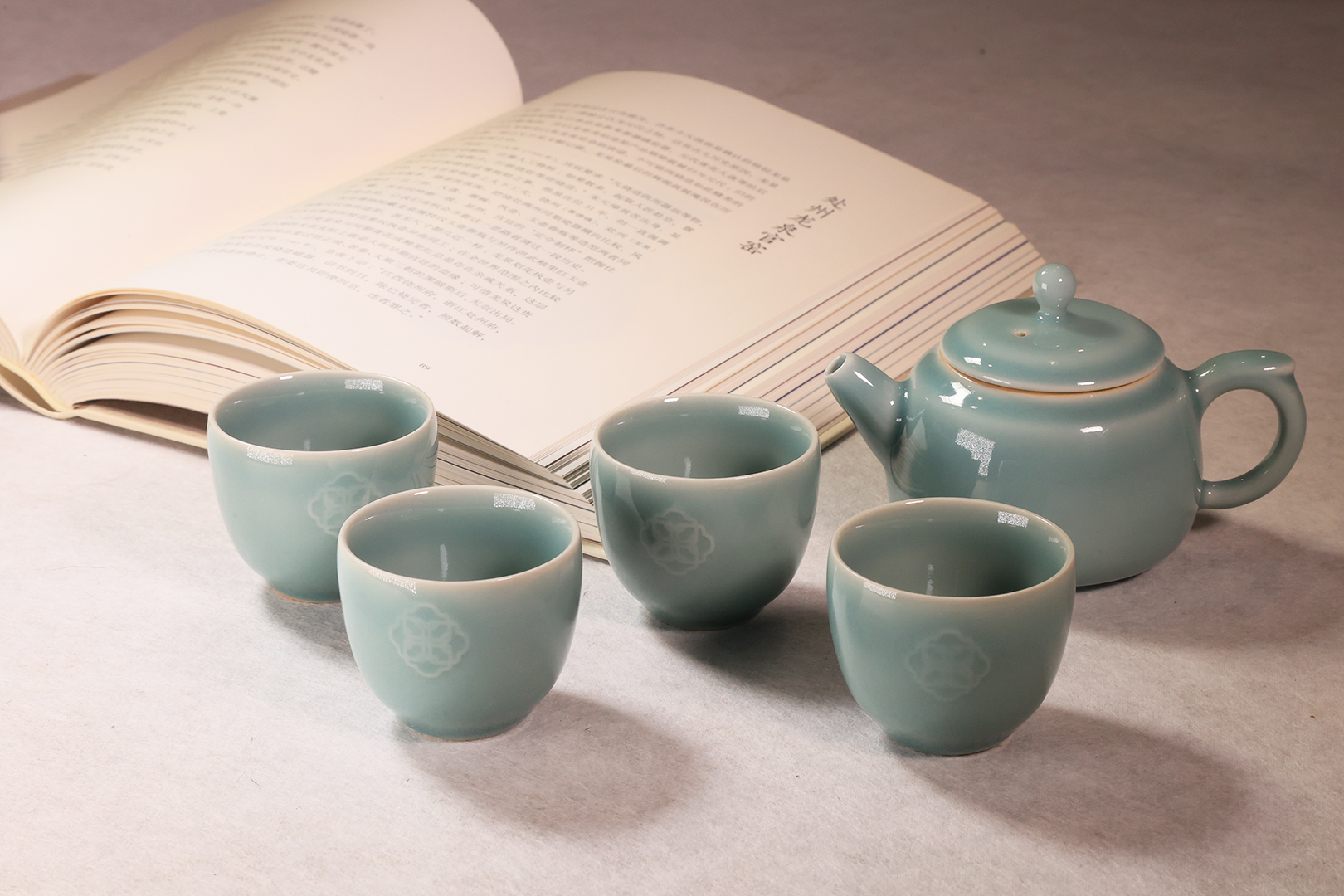
Master-Crafted Longquan Celadon Tea Set
Ideal for gongfu-style tea or quiet moments alone.Limited edition. Master-fired.
Shop Now →Notes
How to identify authentic celadon:
There are two types of Longquan celadon: Ge Kiln celadon and Di Kiln celadon. You can distinguish them by looking at the color of the exposed clay at the bottom of the piece. Celadon with white clay or cinnabar clay at the bottom belongs to Di Kiln, while those with black clay and iron feet are from Ge Kiln.
The characteristics of Longquan celadon should meet the following:
– **As bright as a mirror**: Due to its thick glaze containing rare ores, it will reflect light like a mirror under the illumination of a lamp.
– **As green as jade**: When observed from the side, its glaze color is like that of jade, translucent but not completely see-through.
– **As sonorous as a chime**: When tapped, it emits a pleasant sound similar to that of a metal musical instrument.
*Generally, handmade Longquan celadon has the seal of the craftsman’s name at the bottom.
How to use Longquan celadon in the correct way :
1 The “crackles” on Ge Kiln Longquan celadon are formed through long-term use. Don’t be hasty. When drinking tea, observe the changes in the porcelain slowly. Over time, you will get a unique piece of porcelain.
2 The best way to maintain a porcelain teapot is to make tea with it frequently. Longquan celadon can enhance the richness and smoothness of the tea. When not in use, place it separately and avoid putting it together with items with strong odors.
3 The ideal way to store Longquan celadon is to put the porcelain in a custom-made box with sponge or foam padding. Don’t put two pieces of celadon together. If you have to, separate them with foam.
4 The most crucial thing after using celadon tea sets each time is cleaning. Wash both the inside and outside of the tea sets thoroughly, and avoid contact with oil stains. Place the cleaned celadon tea sets in a dry and clean place.
What Kind of Tea is Suitable for Longquan Celadon :
The tea utensils made of Longquan celadon have a thick glaze, so the inner wall won’t absorb any tea flavors, making them suitable for brewing various types of tea.
·White tea: White tea is a slightly fermented tea with a clear appearance and a delicate taste. Teas like Baihao Yinzhen and Bai Mudan, when brewed in Longquan celadon tea sets, allow you to easily observe the unfolding of the tea leaves and the clarity of the light-colored tea soup.
·Oolong tea: Oolong tea has a unique aroma and a rich taste. When paired with Longquan celadon, it can highlight the aroma of the tea and make the taste smoother, with a long-lasting fragrance at the bottom of the cup. Examples include Dahongpao and Shuixian.
·Pu’er tea: Pu’er tea has a rich taste and a strong tea aroma. It reduces the bitterness and astringency, and leaves a long-lasting fragrance at the bottom of the cup. Types like raw Pu’er tea and ripe Pu’er tea are suitable.
·Scented tea: Scented tea has a strong aroma, such as jasmine tea and rose tea. When paired with Longquan celadon tea sets, it can better highlight its aroma and refreshing taste.
During the cooperation with many Longquan celadon artists, Pan Junli said, “I’m very lucky to be part of the continuous inheritance and development of Longquan porcelain. In China, ‘jade’ symbolizes the virtues of a gentleman. I sincerely hope that more people can feel the beauty and preciousness of Longquan celadon. Its warm and smooth texture, like that of jade, is a history and culture that can be touched with one’s hands.”
Like this? Do you want to learn more professional knowledge about Chinese tea? Please subscribe to us via email. You’ll be the next tea expert! ☕
No account yet?
Create an Account